 Indians Archive
Indians Archive  Tribe Game Vault: 4/25/90. Tribe Legend* Keith Hernandez Homers
Tribe Game Vault: 4/25/90. Tribe Legend* Keith Hernandez Homers
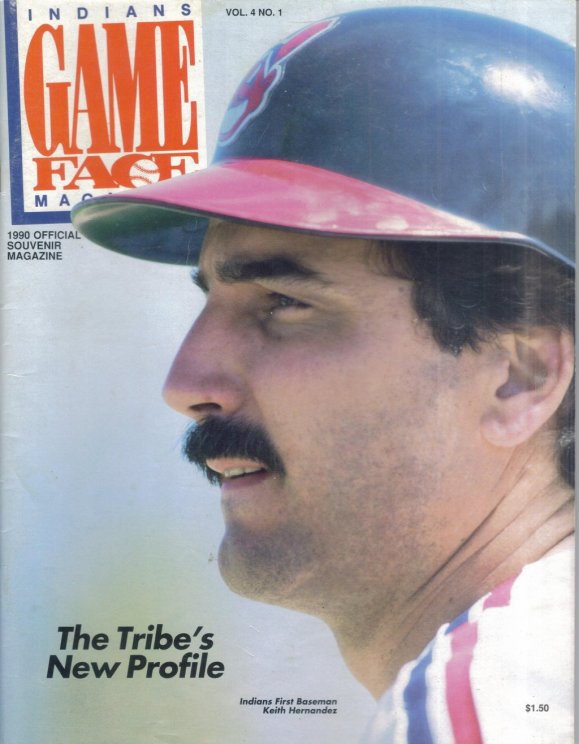 New Cleveland Indians first baseman Keith Hernandez made his purposeful approach to the Skydome home plate area. In a routine that was familiar to most baseball fans by now, he stood outside of the batter’s box for a moment and carefully studied his grip on his bat. Satisfied that his knuckles were lined up perfectly, the left hander was ready to step in against Todd Stottlemyre. It was early in the career of the Blue Jays’ workhorse, who one day would help lead Toronto to back-to-back World Series wins.
New Cleveland Indians first baseman Keith Hernandez made his purposeful approach to the Skydome home plate area. In a routine that was familiar to most baseball fans by now, he stood outside of the batter’s box for a moment and carefully studied his grip on his bat. Satisfied that his knuckles were lined up perfectly, the left hander was ready to step in against Todd Stottlemyre. It was early in the career of the Blue Jays’ workhorse, who one day would help lead Toronto to back-to-back World Series wins.
***
Hernandez, nicknamed ‘Mex’ but who is half Spanish, half Irish, had had a storied career in the National League. He’d been drafted by the St. Louis Cardinals in the early 1970s (it was said his father had played with Cardinal legend Stan Musial in the Navy during the war). His fielding at first base was considered second to none, and within the next few seasons, his hitting developed as well. The Cardinals traded their previous first baseman, Joe Torre, in order to make room for Hernandez. In 1976, Hernandez won his first Gold Glove Award. He also hit .344 and was the co-winner of the National League MVP Award (along with Willie Stargell of the Pirates). He remained an NL star, and his Cardinals won the World Series in 1982 vs. Milwaukee. He was also becoming known as a student of the game of baseball.
But his manager wanted him gone. The respected Whitey Herzog called Hernandez a ‘cancer’ on the team. He traded the All-Star to the New York Mets.
When the trade was made, there were strong rumors of Hernandez’ use of cocaine. This speculation was verified during the public trial of a Pittsburgh drug dealer in 1985.
So there was a dichotomy to Keith Hernandez. He was perhaps the best, most competitive first baseman in the game, but his team, built to win, didn’t want him. Also of note: he had sat out his senior season of high school baseball in rebellion to his coach.
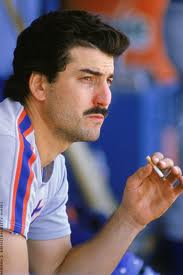 But his new team, the New York Mets, made Hernandez its captain in 1984. He was the veteran many of the very young ballplayers looked to- guys like Dwight Gooden, Darryl Strawberry, Wally Backman and Ron Darling.
But his new team, the New York Mets, made Hernandez its captain in 1984. He was the veteran many of the very young ballplayers looked to- guys like Dwight Gooden, Darryl Strawberry, Wally Backman and Ron Darling.
Hernandez originally was reticent to play in New York. He had to be convinced his career could flourish there, where others had struggled due to the pressure and outside distractions. And the Mets were terrible, finishing in last place in the NL East in 1983. But apparently, he was a perfect fit for the Mets.
On the field, the talent of Keith Hernandez was undeniable. Per Wiki:
“(he) had such a strong and accurate throwing arm that, as a result, the Mets re-routed their relays through him (instead of the second baseman). Due to his quick instincts, Hernandez was also able to play farther off first base than other first basemen, allowing the other infielders to play farther to their right… (he) played so aggressively at first base that he occasionally discouraged opponents to bunt merely by reputation… Cubs manager Jim Frey said he wouldn’t ask most pitchers to bunt against the Mets. “You’re asking for a forceout at second, and now you’ve got your pitcher running the bases,” he said.”
The Mets and Cardinals became heated rivals in the NL East. The Cardinals won the pennant in 1985, and in 1986, it was the Mets’ turn. They won 108 games and took the World Series, over the Boston Red Sox.
But see, here we are again- in the 10th inning of the sixth game, Keith Hernandez had hit a fly ball for the second out with nobody on base and the Mets down by two. The captain retired to the manager’s office, and began drinking Budweisers. Eventually, Boston first baseman Billy Buckner let a slow rolling ground ball trickle through the wickets to allow the Mets to win in one of the most incredible comebacks in baseball history.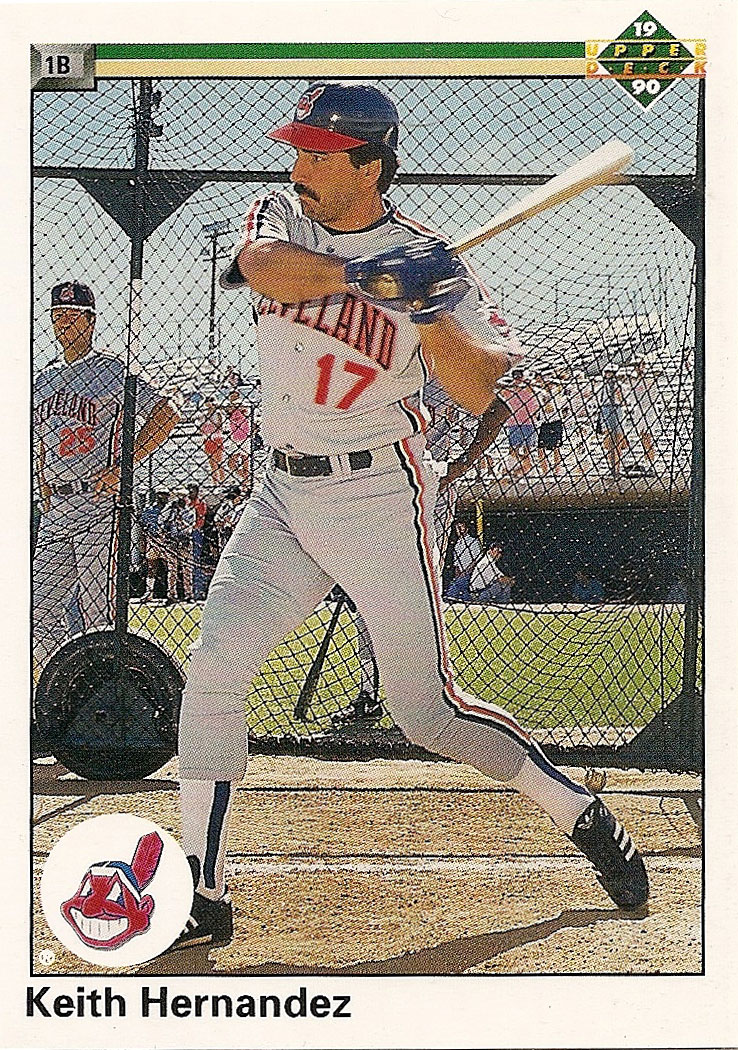
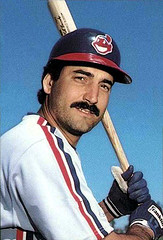 But Hernandez was-and remains- a fixture in the hearts and minds of New York Mets fans. His competitive fire was unmistakable- do a search on YouTube for plenty of proof of that (prepare yourself for New York’s typical self-pleasuring- on second thought, watch with the sound off). He hit; he was clutch at the plate; his string of Gold Gloves stretched through the 1988 season. And throughout the entire decade, he dogged it out of the batter’s box down the first base line pretty much every time he hit a fly ball or an infield grounder.
But Hernandez was-and remains- a fixture in the hearts and minds of New York Mets fans. His competitive fire was unmistakable- do a search on YouTube for plenty of proof of that (prepare yourself for New York’s typical self-pleasuring- on second thought, watch with the sound off). He hit; he was clutch at the plate; his string of Gold Gloves stretched through the 1988 season. And throughout the entire decade, he dogged it out of the batter’s box down the first base line pretty much every time he hit a fly ball or an infield grounder.
Hernandez’ 1989 season was shortened by injury. The Mets were looking to move in a new direction, and did not renew the contracts for Hernandez and catching stalwart Gary Carter after the season.
The Cleveland Indians were interested. They had a core of young ballplayers, and the thinking was they could benefit from Keith Hernandez’ veteran presence. Although the Tribe still had holdovers such as third baseman Brook Jacoby, left fielder Candy Maldonado, right fielder Cory Snyder and second baseman Jerry Browne, they had just made the trade of Joe Carter to the San Diego Padres. In return, they received veteran Chris James along with young catcher Sandy Alomar Jr. and infielder Carlos Baerga. They also acquired the speedy Alex Cole. They were beginning to prepare the franchise to be competitive as they transitioned to the new ballpark at the 'Gateway' complex.
Pete O’Brien had been the Indians' first baseman in 1989. For years, he’d been a solid player with the Texas Rangers, although it was tough for an American League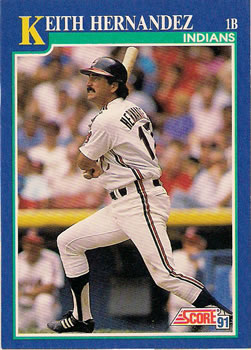 first baseman to get noticed among the likes of Don Mattingly, Mark McGuire, Eddie Murray and Wally Joyner. Keith Hernandez had bona fide star power, and in 1990 would represent a step up for the team.
first baseman to get noticed among the likes of Don Mattingly, Mark McGuire, Eddie Murray and Wally Joyner. Keith Hernandez had bona fide star power, and in 1990 would represent a step up for the team.
If he could only be healthy enough to play. At least his knee, injured the prior season, did appear sound.
***
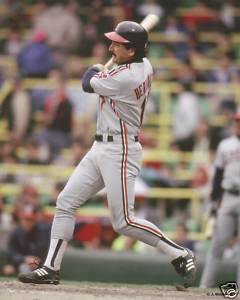 On that April Wednesday in 1990, the 5-8 Indians found themselves down 3 to 1 in the fourth inning. To begin the game, Dion James singled home shortstop Felix Fermin, who had tripled. One-time Tribe farmhand Kelly Gruber answered in the bottom of the first with a two-run home run off Indians starter Kevin Bearse. By the time Keith Hernandez came up in the top of the fifth inning, the Tribe was down by two. Maldonado led off the inning with a fly ball to right, and Jacoby reached base on an error on future Indian Tony Fernandez (is there a word that means, “sort of ironic”?). Hernandez turned on the 0-1 pitch and cuh-rushed it! HOME RUNNNNN!!!!! Game tied. Oh yeeeaahhhhh.
On that April Wednesday in 1990, the 5-8 Indians found themselves down 3 to 1 in the fourth inning. To begin the game, Dion James singled home shortstop Felix Fermin, who had tripled. One-time Tribe farmhand Kelly Gruber answered in the bottom of the first with a two-run home run off Indians starter Kevin Bearse. By the time Keith Hernandez came up in the top of the fifth inning, the Tribe was down by two. Maldonado led off the inning with a fly ball to right, and Jacoby reached base on an error on future Indian Tony Fernandez (is there a word that means, “sort of ironic”?). Hernandez turned on the 0-1 pitch and cuh-rushed it! HOME RUNNNNN!!!!! Game tied. Oh yeeeaahhhhh.
Thirteen games in, Keith Hernandez was only hitting a buck-eighty-six, and the local media’s quest for a Marsha Mason sighting was as of yet unfruitful (she was a movie star, and we were told she was Hernandez’ girlfriend- I think we were expected to be star-struck). On this day, the Indians would go on to suffer their ninth loss and fall 4 ½ in back of Toronto. Kelly Gruber would do further damage, along with future Tribesman Glenallen Hill. But hey, it was still early. 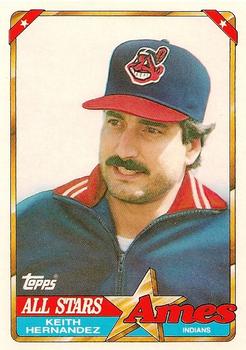 There was plenty of time left in a long season. And either way, the future looked bright- notably, reliever Steve Olin continued to impress, with three shutout innings on this day. The submariner and heir apparent to closer Doug Jones was in his second season with the Indians in 1990. Olin was looking like the real deal.
There was plenty of time left in a long season. And either way, the future looked bright- notably, reliever Steve Olin continued to impress, with three shutout innings on this day. The submariner and heir apparent to closer Doug Jones was in his second season with the Indians in 1990. Olin was looking like the real deal.
You know the rest of this story. This game represented the apex of the Keith Hernandez era in Cleveland. His various leg and back injuries caused him to miss large chunks of the 1990 season, until he was shelved for good in August. Here is where we do the obligatory break-down of his then-substantial, guaranteed, two-year, $3.5 million contract with the Indians:
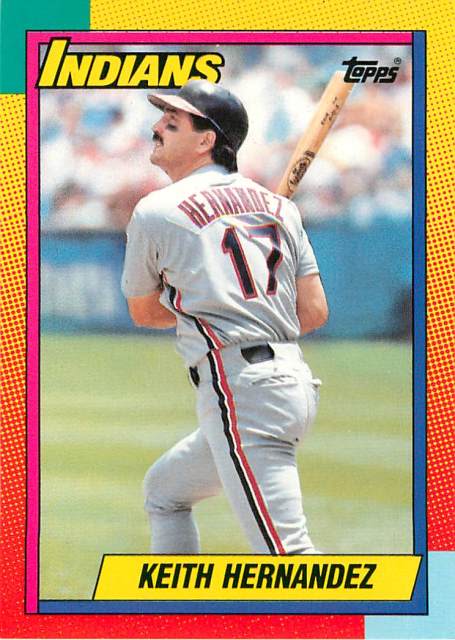 43 games equals $81,395 per game.
43 games equals $81,395 per game.
8 RBI equals $437,500 per RBI.
1 home run equals $3,500,000.00 per home run. And it was hit in an away game. (Sure, if I could add more zeros, I would.)
Too harsh? Maybe. Cleveland did offer him the money. Presumably, he passed the Indians’ physical exam. Although to my untrained eye, Keith Hernandez often looked like he was in pain when he swung the bat while in a Tribe uni.
At least he did try to come back in 1991, until a bulging disc caused him to shut it down for good in spring training. Still, this was a veteran who was signed to help lead young, talented ballplayers as he had done before. The Mets comp came to mind when he joined the Tribe in 1990. However, he not only was not with the team; he was noted by former teammate Ray Knight as failing to even contact the Indians when they were playing in New York. Keith Hernandez was no more visible to Cleveland than Marsha Mason was.
To most, none of that matters in 2012. Keith Hernandez is worshiped by Mets fans. Currently, he is a broadcaster for the team. He is untouchable enough that he can slight professional women (who hail from Cleveland, no less) on the air. Hey, whatever works for him, right?
Thank you for reading.
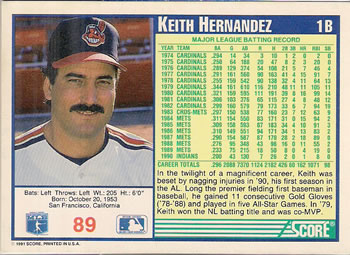
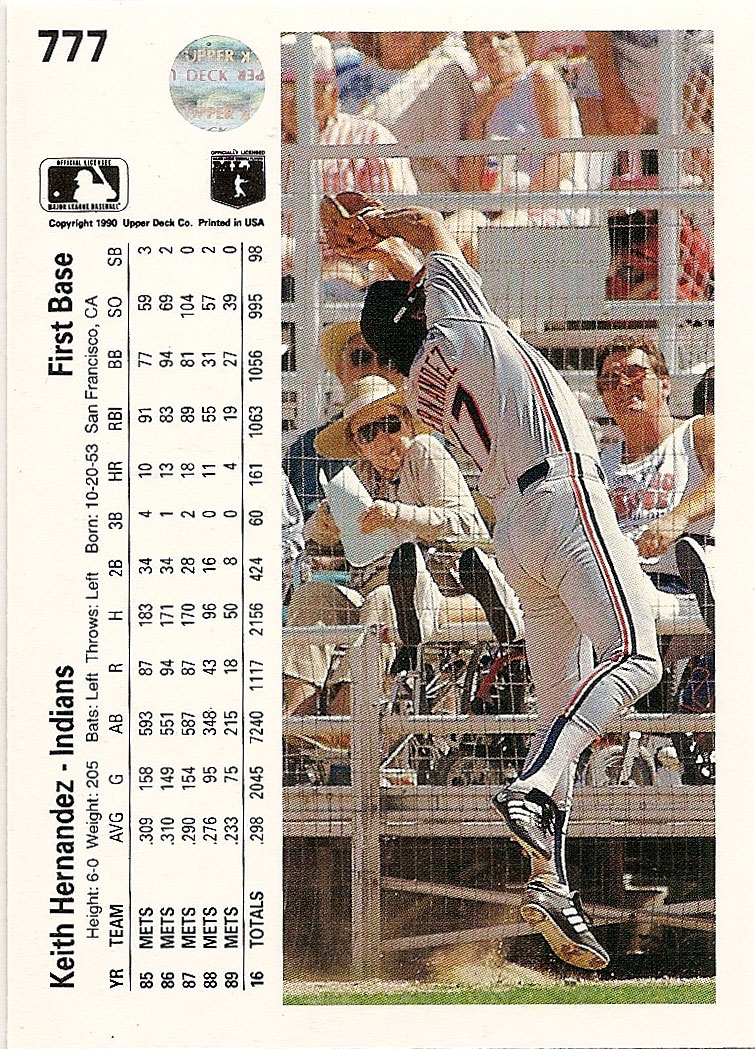
- NBA Announces 2013-2014 Schedule
- Browns Ink Sharknado
- Sharknado A No-Show For Rookie Camp
- Trent Richardson Out Until Training Camp
- Browns Sign Brandon Jackson
- Carrasco Suspended Eight Games
- Browns Add to Wide Receiver Depth with David Nelson
- Browns Need to Learn from Past Draft Mistakes
- Browns Release Chris Gocong and Usama Young
- Browns Missing on Grimes Disappointing, But Not The End
The TCF Forums
- Chris Grant's first 3 drafts
Kingpin74 (Tuesday, January 21 2014 10:13 AM) - The 2014 Offseason Thread
googleeph2 (Tuesday, January 21 2014 9:36 AM) - 2015 Recruiting
furls (Tuesday, January 21 2014 6:57 AM) - Mike Brown
YahooFanChicago (Monday, January 20 2014 11:15 PM) - Movies coming out
HoodooMan (Monday, January 20 2014 9:34 PM) - 2014 Hoops Hockey Hijinx
jpd1224 (Monday, January 20 2014 4:44 PM) - 2014 Recruiting
jclvd_23 (Monday, January 20 2014 2:26 PM) - Wish List - #4 Pick
Hikohadon (Monday, January 20 2014 1:26 PM) - Official- Browns Coach Search/Rumors
OldDawg (Sunday, January 19 2014 6:48 PM) - #1 overall pick Anthony Bennett
TouchEmAllTime (Sunday, January 19 2014 1:28 PM)



